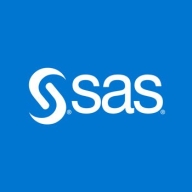

SAS Enterprise Miner and Databricks are competing products in the data analysis space. Databricks is often viewed as a superior product due to its advanced features and scalability, offering more flexibility in various data environments.
Features: SAS Enterprise Miner offers robust predictive analytics, extensive model management capabilities, and a vast range of statistical operations. Databricks, meanwhile, provides seamless integration with big data tools, a collaborative workspace for data engineering tasks, and advanced machine learning functionalities.
Room for Improvement: SAS Enterprise Miner could enhance its scalability and cloud integration. An improvement in the user interface for modern usage patterns would be beneficial. Additionally, expanding machine learning features could add value. For Databricks, better offline capabilities would augment its utility in areas with limited internet access. Improving the intuitive nature of certain advanced settings could be beneficial, as well as offering more detailed built-in analytics reporting.
Ease of Deployment and Customer Service: SAS Enterprise Miner is traditionally deployed on-premise, offering comprehensive support services, extensive documentation, and direct phone support, which benefits enterprise setups. Databricks provides cloud-based deployment, enabling faster scalability and updates. Its wide range of online resources and community support reflect a cloud-native approach, offering flexibility and community-driven solutions.
Pricing and ROI: SAS Enterprise Miner generally involves a higher upfront setup cost with predictable long-term expenses, catering to enterprises seeking stable financial commitments. Databricks employs a pay-as-you-go pricing model, which can be more economical for dynamic workloads and provides greater flexibility, potentially leading to higher returns through efficient resource use.
| Product | Market Share (%) |
|---|---|
| Databricks | 13.9% |
| SAS Enterprise Miner | 1.2% |
| Other | 84.9% |

| Company Size | Count |
|---|---|
| Small Business | 25 |
| Midsize Enterprise | 12 |
| Large Enterprise | 56 |
| Company Size | Count |
|---|---|
| Small Business | 3 |
| Midsize Enterprise | 4 |
| Large Enterprise | 7 |
Databricks offers a scalable, versatile platform that integrates seamlessly with Spark and multiple languages, supporting data engineering, machine learning, and analytics in a unified environment.
Databricks stands out for its scalability, ease of use, and powerful integration with Spark, multiple languages, and leading cloud services like Azure and AWS. It provides tools such as the Notebook for collaboration, Delta Lake for efficient data management, and Unity Catalog for data governance. While enhancing data engineering and machine learning workflows, it faces challenges in visualization and third-party integration, with pricing and user interface navigation being common concerns. Despite needing improvements in connectivity and documentation, it remains popular for tasks like real-time processing and data pipeline management.
What features make Databricks unique?In the tech industry, Databricks empowers teams to perform comprehensive data analytics, enabling them to conduct extensive ETL operations, run predictive modeling, and prepare data for SparkML. In retail, it supports real-time data processing and batch streaming, aiding in better decision-making. Enterprises across sectors leverage its capabilities for creating secure APIs and managing data lakes effectively.
We monitor all Data Science Platforms reviews to prevent fraudulent reviews and keep review quality high. We do not post reviews by company employees or direct competitors. We validate each review for authenticity via cross-reference with LinkedIn, and personal follow-up with the reviewer when necessary.